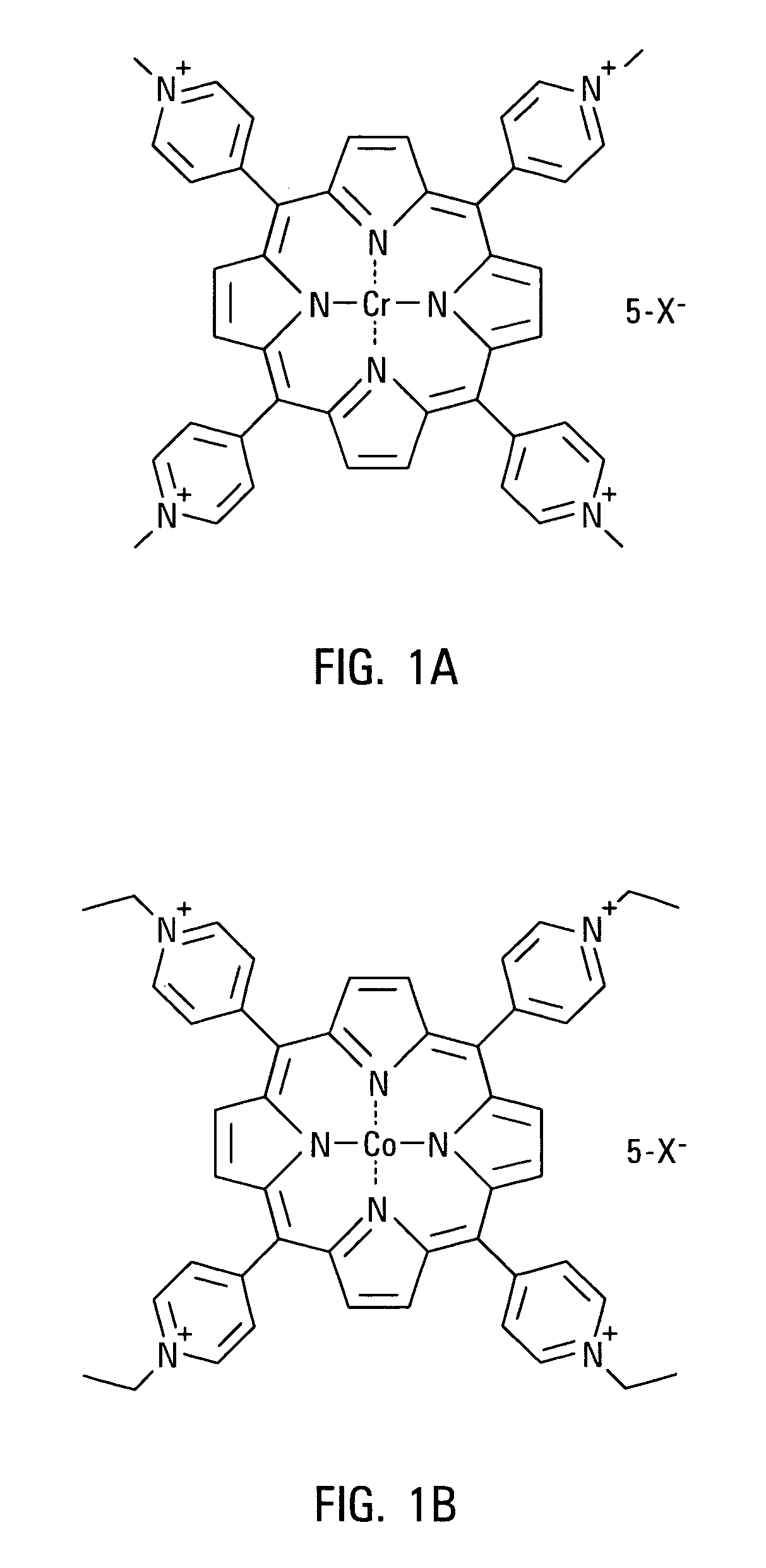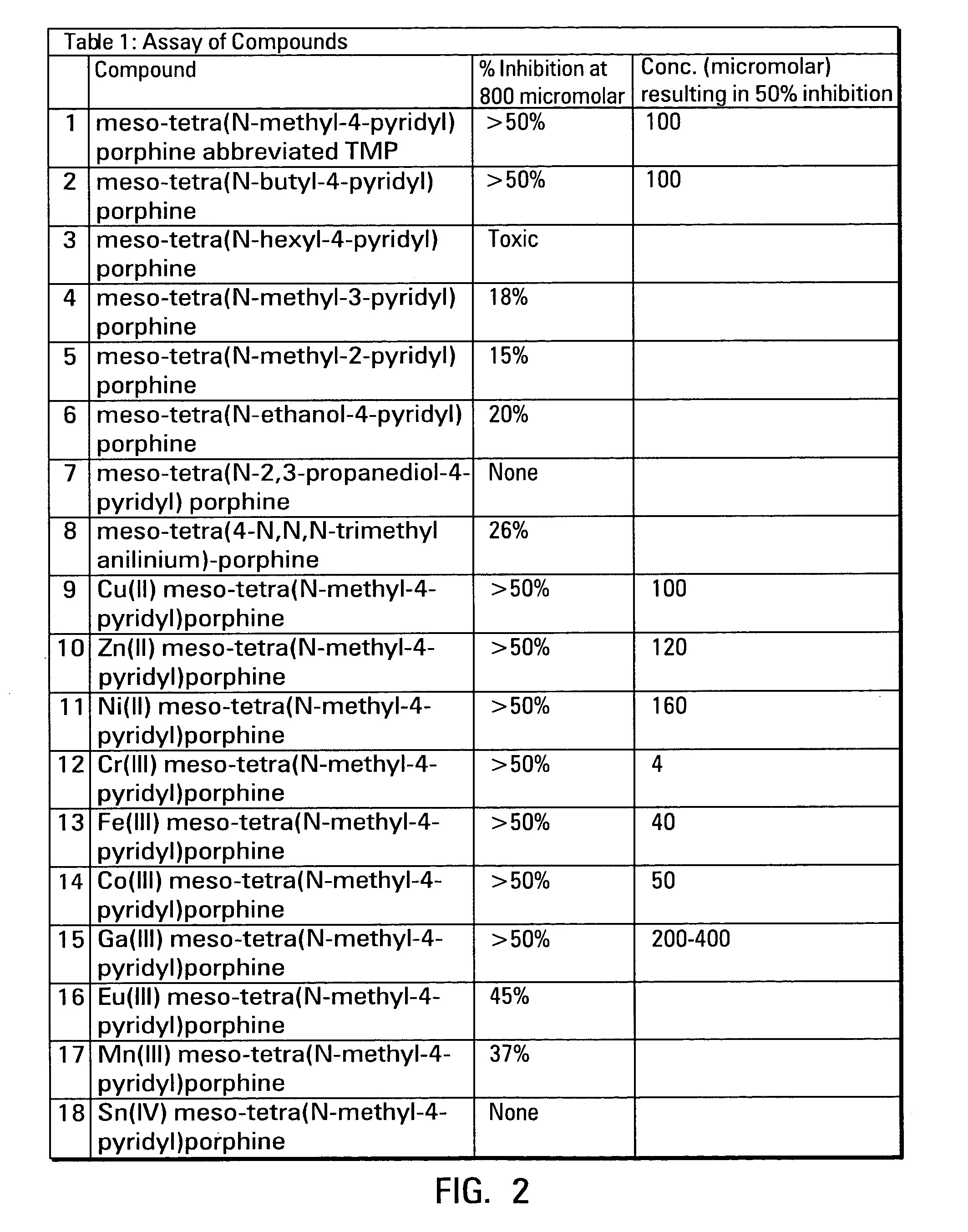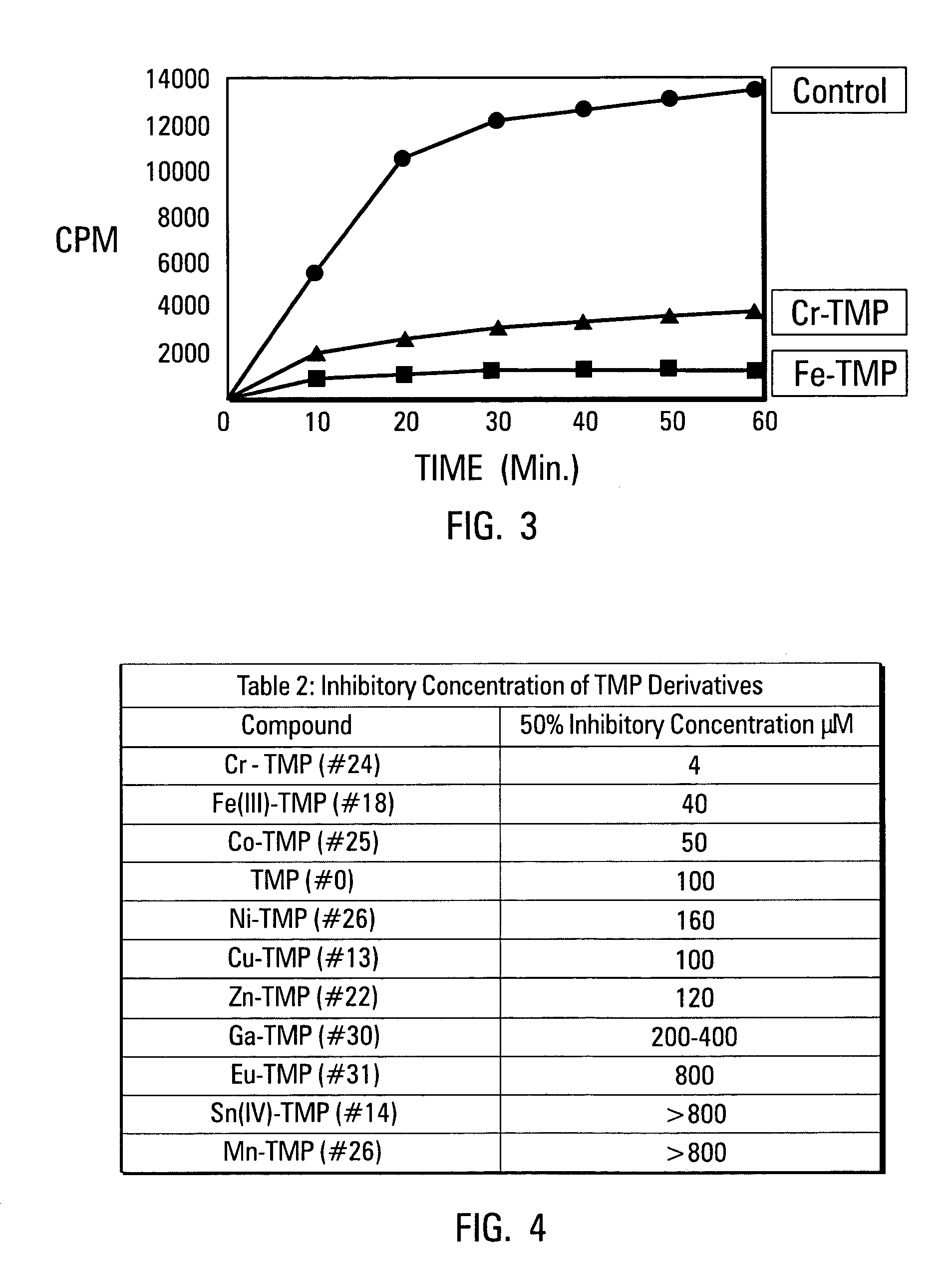Porphyrins and metalloporphyrins for inhibiting heme iron uptake
- Summary
- Abstract
- Description
- Claims
- Application Information
AI Technical Summary
Benefits of technology
Problems solved by technology
Method used
Image
Examples
example 1
Inhibition of in Vitro Uptake of Radiolabeled Iron from Heme
[0056]In a first assay, confluent monolayers of IEC-6 cells were incubated with radioactive iron-labeled heme. IEC-6 cells are transparent epitheloid cells which commonly grow as monolayers that are derived from normal rat small intestine. In this assay, the heme had been previously solubilized in taurodeoxycholate micelles. Twelve-well tissue culture plates were used with 1 ml of phosphate-buffered saline (or “PBS”) containing Ca, Mg and glucose. Cells were incubated with the heme solution and a designated inhibitor for times indicated at a temperature of 37° C.
[0057]After incubation, the cells were washed with 1 ml of the same buffer at 4° C. three times. The cells were then solubilized by the addition of 1 ml of water and sonicated for 10 minutes in a Branson sonicator. The cells were removed by titration and transferred to 75 ml tubes. Subsequently, the radioactivity of the cells was determined using a gamma counter.
[00...
example 2
Inhibition of In Vivo Uptake of Radiolabeled Iron From Heme in the Rat Duodenal Model
[0063]In this assay, Wistar rats were first anesthetized with pentobarbital. Wistar rats are from a strain originally developed at the Wistar Institute and commonly used all over the world for research. Following anesthesia, a midline incision was made in each of the rats. The duodenum of each animal was isolated between the pylorus and the ligament of Trietz by umbilical tape. The bile duct of each animal was then identified and ligated. Following this, a syringe was passed through the pylorus of each animal, and one ml of radiolabeled heme solution was introduced into the duodenum. The heme solutions used contained either only heme, or additionally included an appropriate concentration of an inhibitor to be evaluated.
[0064]Following introduction of the heme or heme / inhibitor solution, the duodenal loop of each animal was tied off. Heme absorption was allowed to continue for a period of 10 minutes....
example 3
[0069]In a next set of experiments, K562 cells were used to test toxicity of the porphyrins of the invention. The results of this test are shown in FIG. 10. K562 cells are erythroleukemia cells from a cell line derived from a chronic myeloid leukemia patient in blast crisis. K562 cells were selected for this testing based on their ability to grow in suspension. This characteristic renders cell counting more reliable. Referring to FIG. 10, samples of the cells were grown in the presence (lower curve) or absence (upper curve) of Cr-TMP at a concentration of 50 μM. The cells were incubated, and were observed to have reached stationary phase at about day 10.
[0070]It was observed that the growth rate of the cells was not decreased even in growth media containing 50 micromolar Cr-TMP (FIG. 10). Some inhibition of cell growth was seen at concentrations above this, but even then growth was merely slowed, while the cells remained viable. No toxicity was seen even after two weeks...
PUM
| Property | Measurement | Unit |
|---|---|---|
| Therapeutic | aaaaa | aaaaa |
Abstract
Description
Claims
Application Information
 Login to View More
Login to View More - R&D
- Intellectual Property
- Life Sciences
- Materials
- Tech Scout
- Unparalleled Data Quality
- Higher Quality Content
- 60% Fewer Hallucinations
Browse by: Latest US Patents, China's latest patents, Technical Efficacy Thesaurus, Application Domain, Technology Topic, Popular Technical Reports.
© 2025 PatSnap. All rights reserved.Legal|Privacy policy|Modern Slavery Act Transparency Statement|Sitemap|About US| Contact US: help@patsnap.com



